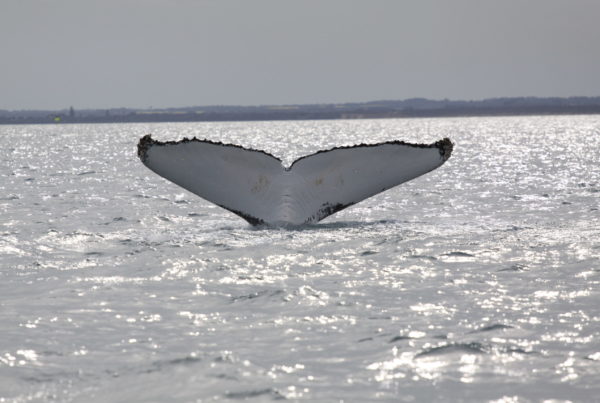Dolphin researchers know we can’t be in all places all the time. So, sightings reports from you – the public – are an incredibly valuable source of data for us. Thank you, and we encourage you to continue to send us your sightings
And why send sightings? Reports from the public not only add to our database, but also to our knowledge of dolphins. And while the data maybe anecdotal it is also important. For example, recently we have had separate sightings of dolphins in the Yarra reported to us by two keen dolphin spotters, Roland Diggens, and Lyndal Harrison.
Roland reported two adult dolphins early last Thursday morning near the Punt Road bridge and the boat sheds. On the following Monday, Lyndal reported and photographed two dolphins lower in river, near the Queens Street bridge. Without fin-identification images, we cannot match the two dolphins seen on Thursday to the animals seen on Monday morning. However, given the locations and the same number of dolphins in both reports, we can suggest it may be the same two individuals. Add to this reports of dolphins in the Yarra in June this year; are you are starting to see the importance of public sighting data? How many dolphins, where and when in the Yarra?
Now another question, why are the dolphins in the Yarra, and what keeps them there for short periods?
Dolphins are wild animals – they are often in an area to mate, or to avoid predators, or to feed (and black bream is one of their favourite fish).
Black bream are found in the Yarra, and their movement is usually associated with the river’s salt wedge. A salt wedge forms when sea water meets the fresh water from rivers and estuaries; the wedge layers ‘sit on top of one another’ due to their differing densities. This wedge can move, depending on the amount of recent rainfall. Heavy rainfall will push the salt water and the resulting wedge towards the mouth of the Yarra, and the bream move with it. When there has been less rain, the wedge moves back up upstream, the bream moving with it. Maybe the dolphins’ favoured fish species, such as bream, are currently downstream in the Yarra, hence the dolphins being sighted. That’s what we don’t know – and that’s why we need you and your sightings (it’s easy click here)
Thank you to all our sighting reporters. Your reports help us to document and understand our resident dolphins and their movements in Port Phillip and beyond. Sighting reports can be made at our website at https://www.dolphinresearch.org.au/research/report-sightings/
Historical image of a rower and dolphins in the Yarra River provided by Peter Nicholson and taken by Parks Victoria.
Post written by Sue Mason, DRI’s Research Director




